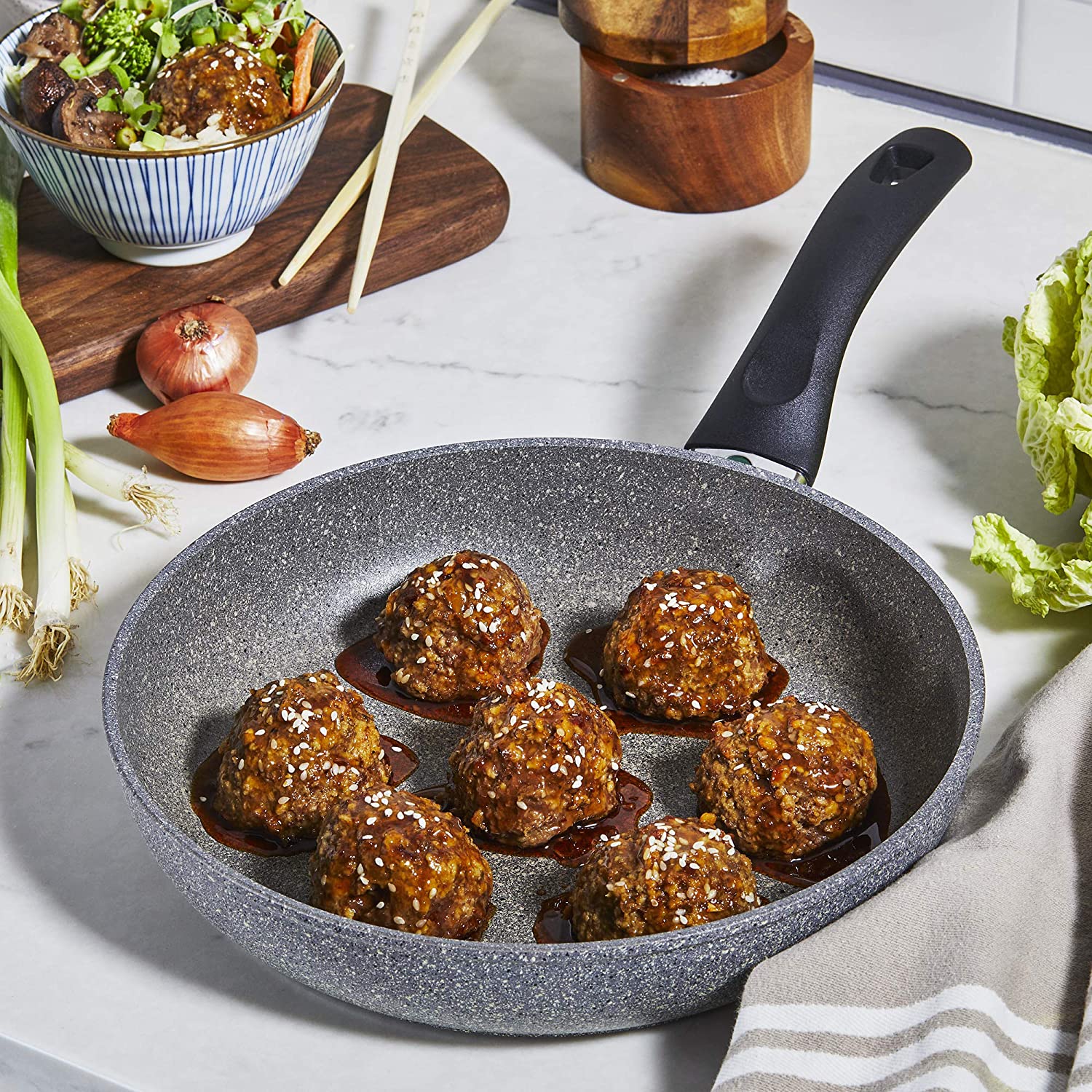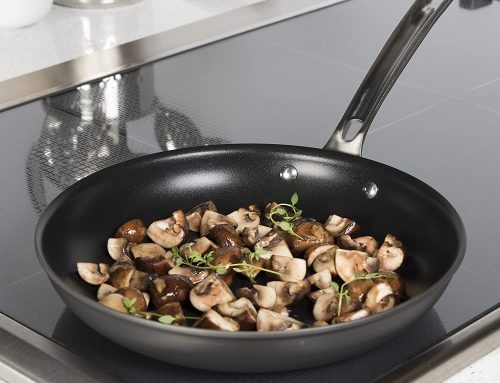What are the most suitable materials for cooking food? Which pots or pans to choose? Is a stainless steel or cast iron pot better? The new Guide to the choice of materials for cooking food comes to our aid, a project by Andid, the National Association of Dietitians, with the sponsorship of the Department of Public Health of the University of Florence. Here are the main indications regarding the type of materials to be used in contact with food, with all the pros and cons for each situation.

What are the most suitable materials for cooking food? Which pots or pans to choose? Is a stainless steel or cast iron pot better? The new Guide to the choice of materials for cooking food comes to our aid, a project by Andid, the National Association of Dietitians, with the sponsorship of the Department of Public Health of the University of Florence.
Here are the main indications regarding the type of materials to be used in contact with food, with all the pros and cons for each situation.
1. Aluminum

Pros
Aluminum pots and pans are lightweight and have high thermal conductivity. The heat is distributed evenly over all surfaces of the pot, both on the bottom and the sides. This reduces the risk of local overheating and burns. PTFE-coated non-stick aluminum pots or pans contain no nickel, heavy metals, or PFOA.
Cons
Aluminum pans are among the most used in catering, but at home, they can be difficult to clean. Washing in the dishwasher or with too aggressive detergents can ruin them. They are not suitable for cooking acidic foods, such as tomatoes, for example for preparing sauces, as traces of aluminum could be transmitted to the food. Aluminum is not suitable for cooking on induction hobs unless it has been specially treated. Ceramic-coated aluminum pans are not very suitable for cooking without seasonings.
READ ALSO: Is aluminum in contact with food safe?
2. Steel

Pros
Pots and pans in this material are usually made of stainless steel, a very resistant material that makes them durable over time, easy to wash, and resistant. The poor heat conductivity of stainless steel makes the pans suitable for cooking that involves the use of water, such as boiling. In the case of coated steel, all PTFE-based non-stick coatings are nickel, heavy metal, and PFOA-free.
Cons
Stainless steel is obtained from an alloy of nickel and chromium, to which other metals can be added, such as titanium, which is necessary to increase its anti-corrosion resistance. Stainless steel contains 18% chromium and 8-10% nickel. We usually talk about 18/10 stainless steel. It can be deduced that the use of steel cookware could be unsuitable for people suffering from allergies or intolerances to metals such as nickel and chromium.
3. Copper

Pros
Copper has a very high thermal conductivity, which makes it suitable for making pans, pots, and pans. The tinning still takes place with the artisanal method. They last forever as they can be stagnated inside and polished outside. At home, copper can be easily polished with lemon juice.
Cons
Larger copper vessels can be heavy and awkward to handle. They are not suitable for washing in the dishwasher as they can get damaged. Copper in itself is not suitable for contact with food, therefore perfect tinning is required, or the combination of copper with steel.
4. Ferro

Pros
Iron has poor thermal conductivity. For this reason, in the kitchen, it is used only for certain preparations, such as meat or fried foods. Therefore its use is recommended for all those preparations which require the achievement of high temperatures.
Cons
You will not be able to wash your iron kitchen utensils in the dishwasher, as this material tends to oxidize easily in contact with water and can rust. After hand washing, iron tools should be dried immediately.
5. Terracotta

Pros
Terracotta is a special type of ceramic and non-metallic material. Terracotta utensils heat up and release the heat they have absorbed very slowly. They are therefore perfect for cooking over low heat and without sudden temperature changes, as in the case of legumes, soups, risottos, and stews. Terracotta pots wash easily with hot water.
Cons
They are very fragile and can be damaged by thermal shocks. It is recommended to soak a clay pot in cold water for 12 hours. To avoid breakage, it is suggested to immerse the terracotta pots in cold water for a few minutes after use, to allow the heat-dried terracotta to rehydrate.
6. Porcelain

Pros
Porcelain cookware features low porosity and high hardness. They are ideal for preparing soups and sauces. They can be used both in the traditional oven and in the microwave.
Cons
Be careful not to confuse real porcelain utensils with other steel utensils that only have an outer porcelain coating. They have nothing to do with porcelain, but only reflect its appearance due to the color of the coating.
7. Cast iron

Pros
Cast iron, obtained from an iron-carbon alloy, is suitable for griddle cooking, but also the preparation of soups and stews because it allows long cooking over low heat with constant heat. It is one of the materials that retain heat better. Enameled cast iron also retains the cold well and can be used to store food in the refrigerator.
Cons
The weak point of cast iron is cleanliness. Before washing cast iron pots, wait for them to cool down to avoid breakage. If they have a corrosion-protective coating, they should be periodically heated and rubbed with oil.
8. Soapstone

Pros
It is a material composed of talc and magnesite, resistant to temperature changes and with a great capacity to accumulate heat. It is used to make cooking plates and real pots. The soapstone plates are suitable to be placed on the embers for the barbecue. Soapstone pots lend themselves to long cooking, such as for stews or braised meats. Cooking can take place without adding fat. No detergents are needed for washing.
Cons
The cost is quite high. You have to pay close attention to cleaning: the first time you have to wash with salt water and dry carefully. Cleaning must be thorough and can be done with the help of an iron scraper. The stove’s uneven heat distribution can cause cracking, so a flame spreader is needed.
9. Glass

Pros
Pyrex glass is considered a particularly suitable material for use in contact with foodstuffs. It is highly resistant to heat, a quality which, together with chemical inertia and transparency, makes it suitable for producing kitchen utensils.
Cons
Pyrex glass is fragile and not very resistant to temperature variations. It is not a good thermal conductor and this limits its possibilities of use, which make it the protagonist only for cooking in the traditional oven or the microwave.
10. Silicone
![]()
Pros
Silicone has non-stick properties which allow cakes and other dishes to be cooked in the oven without the addition of fats such as butter or oil, and without buttering or flouring the pans. The molds fold back on themselves and take up little space. They can be used both in the oven and in the fridge or freezer.
Cons
It is feared that silicone molds could release potentially harmful substances, especially during the first use. For this reason, it is advisable to always wash silicone utensils very well and to use them for the first time for empty cooking, for example for a simple mixture of water and flour, to be thrown away once ready. It is recommended to choose quality silicone.








